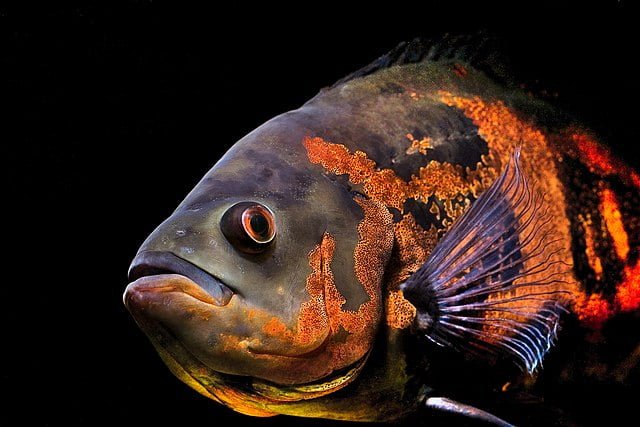The Philippines – While oysters are naturally clingy, a scientist has found that they grow best with no attachments and when given healthy boundaries.
Seafood lovers are acquainted with prying their way through clumps of steamed oyster shells. The shells – sizeable, petite and everything in between – reveal random morsels of meat that go well with fish sauce and spiced vinegar.
In the Philippines, oysters sell for as little as P60–70 (US$1.20–US$1.40) per serving, roughly 10-15 shells, in small seafood restaurants. However, diligent traders may opt to carefully separate, sort, and clean larger shells to enter the lucrative market of premium unclustered oysters served in hotels and high-end restaurants, where a dozen pieces can fetch around P500 (US$10).
To help oyster producers capture the premium market, a mollusk scientist devised a simple method of growing oysters that are not only single, but also young and meaty.
“Oysters are traditionally grown on bamboo stakes, worn tires, or old shells installed at river mouths,” said Dr. Ma. Junemie Hazel Lebata-Ramos, a scientist at the Southeast Asian Fisheries Development Center, Aquaculture Department (SEAFDEC/AQD) based in Iloilo, Philippines. Wild oyster larvae naturally stick to these surfaces and form clusters of marketable, but often smaller, oysters in nine to 12 months.
Dr. Lebata-Ramos, however, found that by giving oysters (Crassostrea iredalei) their own private space to grow, in pouches or trays, they can grow unclustered, yield up to 59 percent more meat, and in 50 percent less time.
As detailed in her recently-published study, her team placed wild-collected baby oyster “spat” and individually stocked them in prototype net pouches and plastic trays suspended from floating bamboo rafts at their study site in Batan Bay in Aklan.
Stay Always Informed
Join our communities to instantly receive the most important news, reports, and analysis from the aquaculture industry.
Each hanging pouch contained 25 compartment pockets that each contained one oyster. Meanwhile, the plastic trays are stacked on top of each other, with each tray also containing 25 oysters.
The spat were collected from submerged tires and old oyster shells where, in the traditional method, they would otherwise have been left to grow to harvestable size.
Larger and meatier
After six months, the oysters grown in pouches and trays grew the most, to an average of 8.9 and 8.3 centimeters shell length, respectively. Those produced traditionally on old shells and tires were an average of 7.6 and 7.2 centimeters shell length.
The body weight followed the same trend, with pouch-grown (87.7 grams average) and tray-grown oysters (87.1 grams) proving to be heavier than those grown clustered on old shells (67.4 grams) and tires (55.1 grams).
“Growing them individually in a space without overcrowding may have caused these oysters to grow larger and meatier compared with those reared using traditional methods,” Dr. Lebata-Ramos said. “More importantly, the oysters in pouches and trays grew individually and achieved almost uniform sizes, which is what the premium market requires.”
Growth was also faster for the pouch-grown oysters which took only nine months, including time for spat collection, to reach the 85-gram premium size. In traditional methods, oysters could take as much as 12 to 18 months to reach that size, Dr. Lebata-Ramos said.
The findings were published in the article “Producing young, single and meaty oyster Crassostrea iredalei (Faustino, 1932) in grow-out culture using pouches suspended from rafts,” which was published in the journal Aquaculture Research on 11 June 2021. The project received funding from the Philippine Council for Agriculture, Aquatic, and Natural Resources Research and Development of the Department of Science and Technology (DOST-PCAARRD).
Worth the additional investment
“While traditional methods require very minimal cost, the oysters are only sold per sack at low prices. Meanwhile, oysters produced using the new methods will add the costs for net pouches, but oysters can be sold by the piece at a much higher price,” she said.
The reusable pouches for her study cost P70 (US$1.40) each to manufacture, although Dr. Lebata-Ramos thinks farmers may easily make the pouches themselves to reduce costs. Meanwhile, anecdotal information gathered from Metro Manila suggests that before the COVID-19 pandemic, single oysters are sold for P15 to P30 (US$0.30–US$0.60) per piece.
Dr. Lebata-Ramos recommended using pouches since the pouches occupy less space when neatly suspended from the raft, and are less cumbersome to handle, are made of low-cost net material, and can be easily handmade.
“The use of hanging pouches from rafts also gives the oyster farmer the freedom to harvest his farmed products based on market demands without sacrificing those oysters that have not yet attained the desired harvest size, which is the case in the traditional methods,” Dr. Lebata-Ramos concluded.
SEAFDEC/AQD Chief Dan Baliao said that while the pouch technique is yet to be tested on a commercial scale, its simplicity makes it a potential springboard for small-scale farmers to improve their income. “Oyster farmers should embrace innovation to expand their market and elevate the common oyster to a true seafood delicacy,” he added.
Source: SEAFDEC Aquaculture Department
Editor at the digital magazine AquaHoy. He holds a degree in Aquaculture Biology from the National University of Santa (UNS) and a Master’s degree in Science and Innovation Management from the Polytechnic University of Valencia, with postgraduate diplomas in Business Innovation and Innovation Management. He possesses extensive experience in the aquaculture and fisheries sector, having led the Fisheries Innovation Unit of the National Program for Innovation in Fisheries and Aquaculture (PNIPA). He has served as a senior consultant in technology watch, an innovation project formulator and advisor, and a lecturer at UNS. He is a member of the Peruvian College of Biologists and was recognized by the World Aquaculture Society (WAS) in 2016 for his contribution to aquaculture.




